
Simulation in Medical Education
The Clinical Skills and Simulation Center is where you’ll use advanced technology and realistic scenarios to practice and refine your clinical skills, decision-making, and communication techniques in a controlled, safe environment, without the risk of harming real patients. We use high-fidelity manikins, standardized patients (SPs), and task trainers to create realistic clinical scenarios and prepare you for patient interaction and the clinical setting.
Clinical Skills
Simulation gives you a hands-on learning experience to practice essential medical procedures, such as intubation, suturing, and catheterization. By working on high-fidelity manikins or task trainers, you can perfect their techniques and develop muscle memory, which is crucial for performing these tasks efficiently and accurately in real-life situations.
Communication Skills
Effective communication is vital in healthcare. Between doctors running a scenario on a manikin and between patient and physician. Medical simulation helps you hone your interpersonal skills, including empathy, active listening, and delivering bad news.
Complex Clinical Scenarios
Simulation provides the opportunity to experience and manage complex and rare clinical scenarios you might not encounter on your clinical rotations. These scenarios can include critical situations such as cardiac arrest, trauma, or emergency childbirth. Exposure to such high-stakes situations in a simulated environment prepares you to respond effectively when and if you do encounter similar cases in real life.
Assessment and Feedback
Simulation allows for objective assessment of your skills and competencies. Each simulated scenario is recorded, reviewed, and assessed using standardized checklists. Your professors provide feedback, highlight areas of strength and where improvement is needed, so you can continue the development of your clinical skills and professional growth.
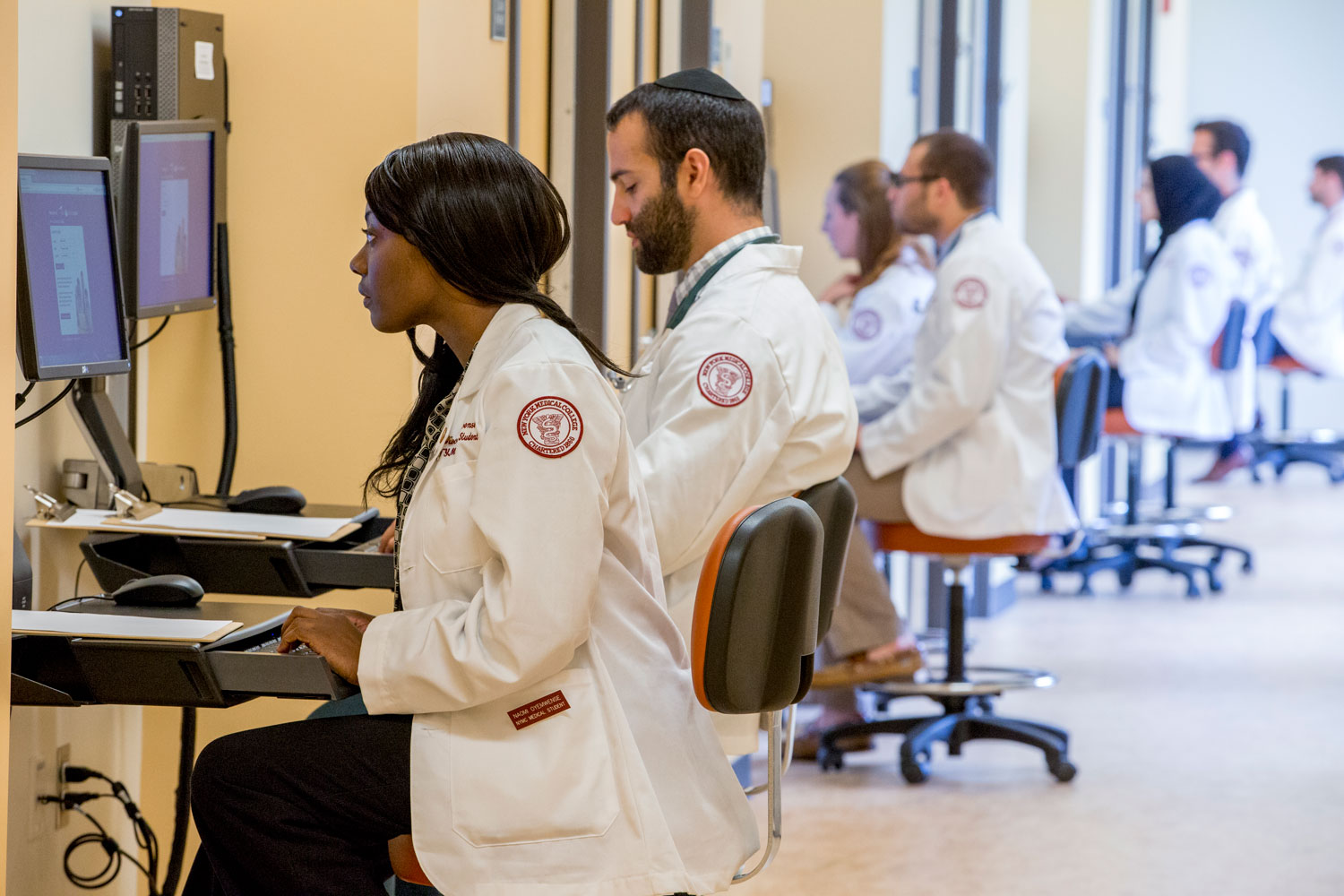
Following a standardized patient exam, students log into LearningSpace to complete a clinical reasoning exercise utilizing evidence based medicine resources.
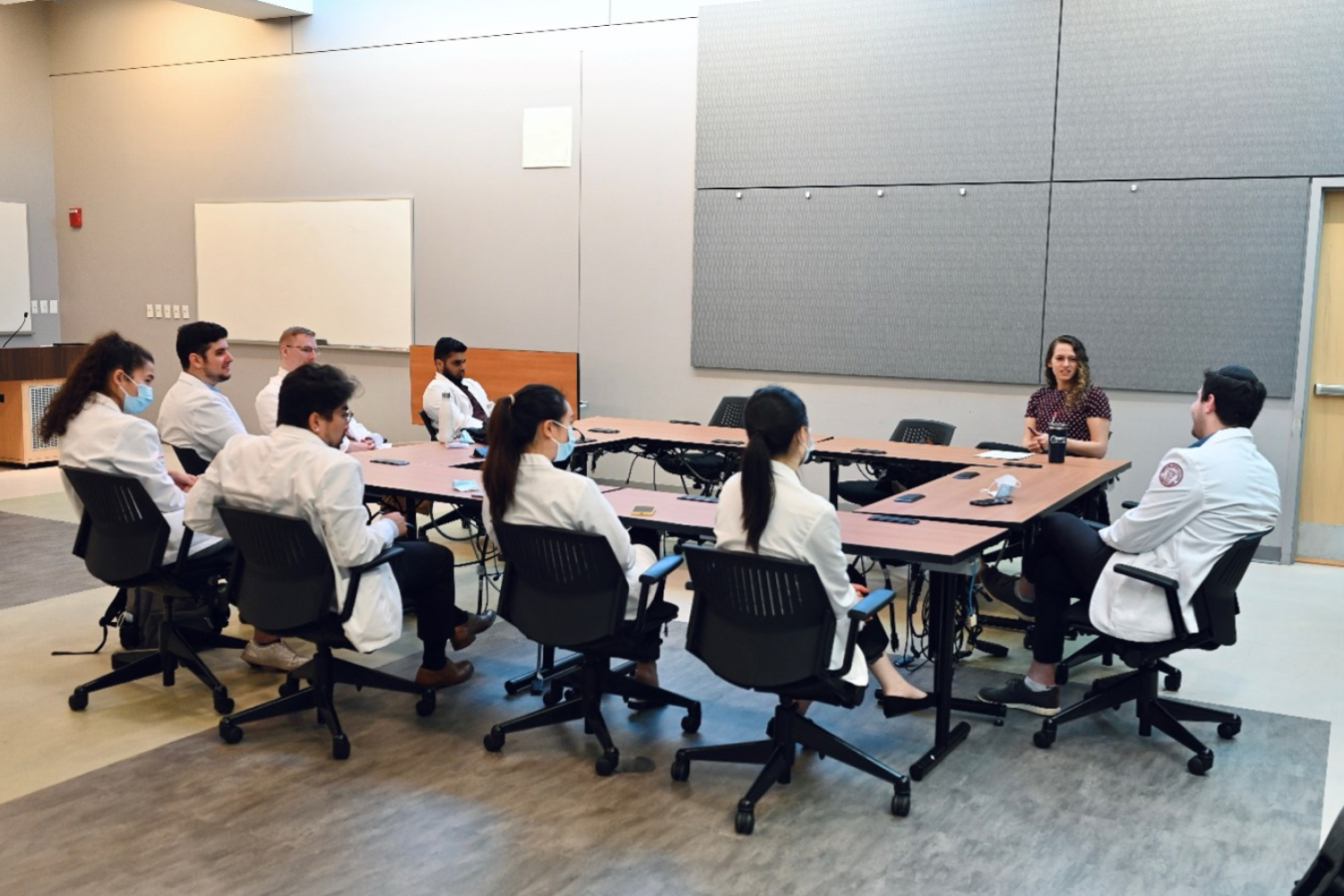
Medical Learners debrief a high-stakes simulation that involved a patient in acute cardiac distress. The clinical facilitator reinforces good decision-making skills and clarifies any incorrect medical treatments that might have occurred.
Facilities and Resources
The CSSC boasts a 27,000 square foot facility at 7 Dana Road which includes:
- 22 examination rooms equipped with the LearningSpace AV system for standardized patient encounters
- Three-bed patient ward simulation suite
- Ultrasound and Procedural Education Room
- Advanced pediatrics simulation suite
- Labor and delivery simulation suite
- Critical care simulation suite
- Operative simulation suite
- Surgical skills lab
- Orthopedic skills lab
- Two teaching classrooms seating 60 persons each
Simulation Modalities
Standardized Patients (SPs) - Human Simulation
Since an ideal way to replicate a human being is with a human being, many aspects of the real clinical world can be evoked using specially trained, professional actors to portray patients with particular health conditions or concerns. Because of their special training, they are referred to as Standardized Patients or as a “SP”. SPs provide consistent and predefined accounts of their conditions, allowing medical students to practice medical history taking, physical examinations, clinical reasoning, and communication skills. Examples of communication skills training includes delivering bad news, enacting shared decision making, collaborating on a therapeutic plan, and/or handing of patient care to another healthcare provider. Every experience is video captured by CAE LearningSpace technologies, has an assessment checklist or tool associated with the encounter, and involves individualized verbal and written feedback from the SPs.
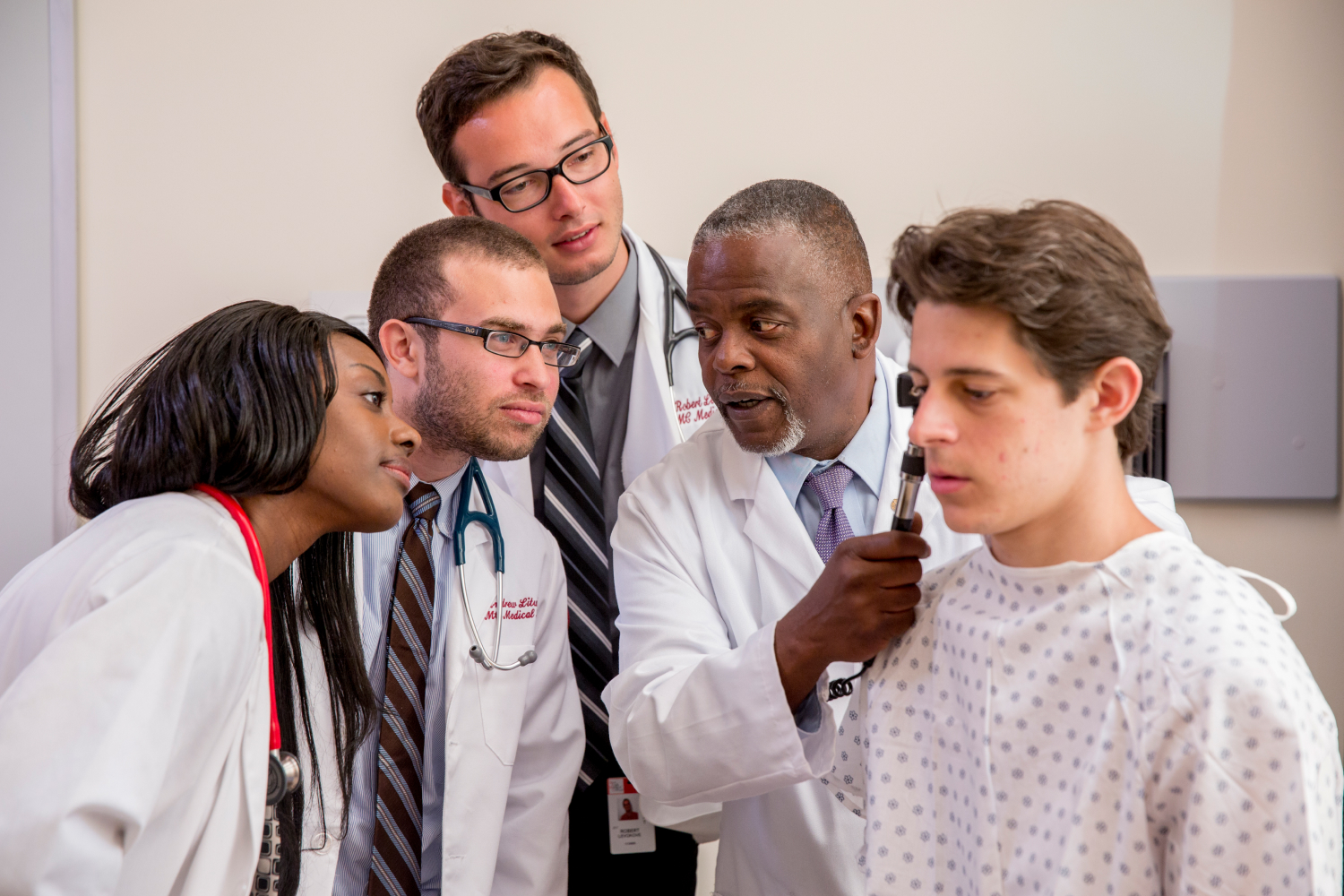
The CSSC utilizes standardized patients to train health professionals on the best practices regarding the physical exam, history gathering, and communication skills.
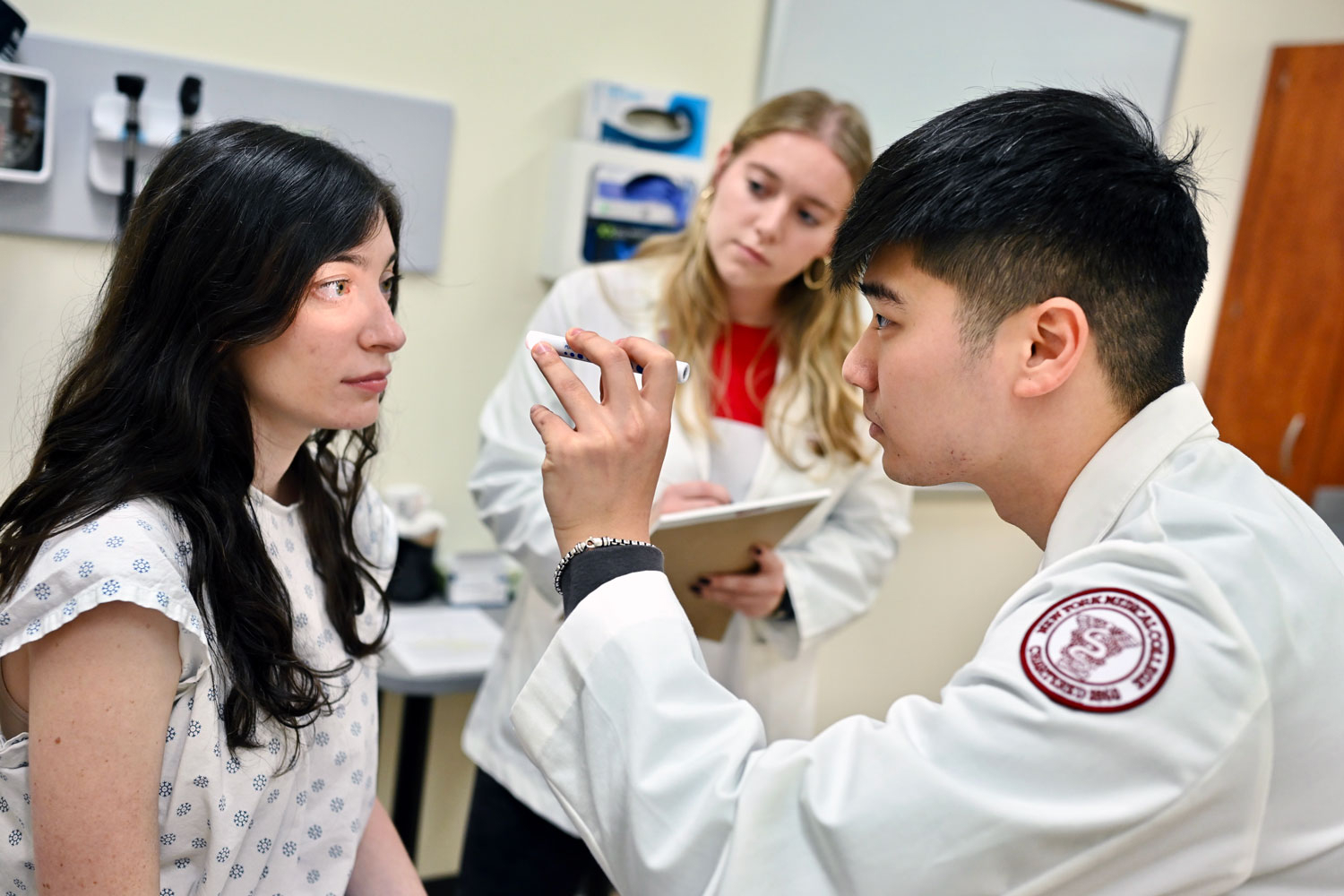
At the CSSC, students can master every aspect of the physical examination by working with SP Physical Exam Specialists.
High-Fidelity Simulation - Manikins
Simulation manikins are high fidelity simulators that react physiologically as if they were alive, complete with accurate vital signs that will change based on the treatment provided to the “patient”. These advanced manikins are used to recreate real-life situations, teach you how to effectively communication as part of a healthcare team, and provide you with an opportunity to practice and refine clinical skills without the risk of patient harm. Manikins, such as SimMan 3G Plus, have expanding chests that breathe, have variable heart rates and tones, measurable blood pressure, and palpable pulses. Each manikin varies in their particular components but may include EKG displays, pulse oximeter, arterial waveforms, pulmonary artery waveforms and anesthetic gases. Various procedures can be performed on the manikins such as bag-mask ventilation, intubation, defibrillation, chest tube placement, cricothyrotomy and others.
High-fidelity simulations extend beyond the simulator and include the surroundings, equipment, and modes of communication, to help you suspend disbelief and fully immerse in the experience. High-fidelity manikins at the CSSC react physiologically like real patients, complete with accurate vital signs that change based on the treatment provided. These simulators allow learners to practice and refine clinical skills without risking patient harm. The CSSC collection includes:
The CSSC Collection of High-fidelity Patient Simulators (Manikins):
- Laerdal SimMan 3G Plus (3 Manikin)
- Laerdal SimMan ALS with SonoSim
- Laerdal SimMom (1 Manikin- coming soon)
- Laerdal Sim Junior (1 Manikin)
- Laerdal Sim Baby (1 Manikin)
- Laerdal Premature Anne (1 Manikin)
- Guamard Newborn Anne (1 Manikin)
- Harvey Cardiopulmonary Simulators (2 manikins)
Advanced Clinical Skills Task Trainers
Task trainers provide key elements of specific procedures or skills, allowing you to acquire basic skills before performing them on real patients under supervision. The CSSC offers various task trainers, including:
- Phillips Point of Care Ultrasounds
- Baby Touch Vital Signs Simulator
- Birthing and Delivery Trainers
- Eye Examination Trainers
- Central Line Placement Trainers
- Advanced Airway Management Trainers (Adult, Adolescent, and Infant)
- Lumbar Puncture Trainers
- Female and Male Catheterization Trainers
- GUTA/MUTA Trainers
- Ear Examination Trainers (Adult and Pediatric)
- Suture and Knot Tying Kits
- Breast Examination Trainers
- IV Training Arms (Infant, Pediatric, Adult)

Our state-of-the-art simulation rooms allow learners to participate in a critical care simulation that helps promote physician communication and patient safety.
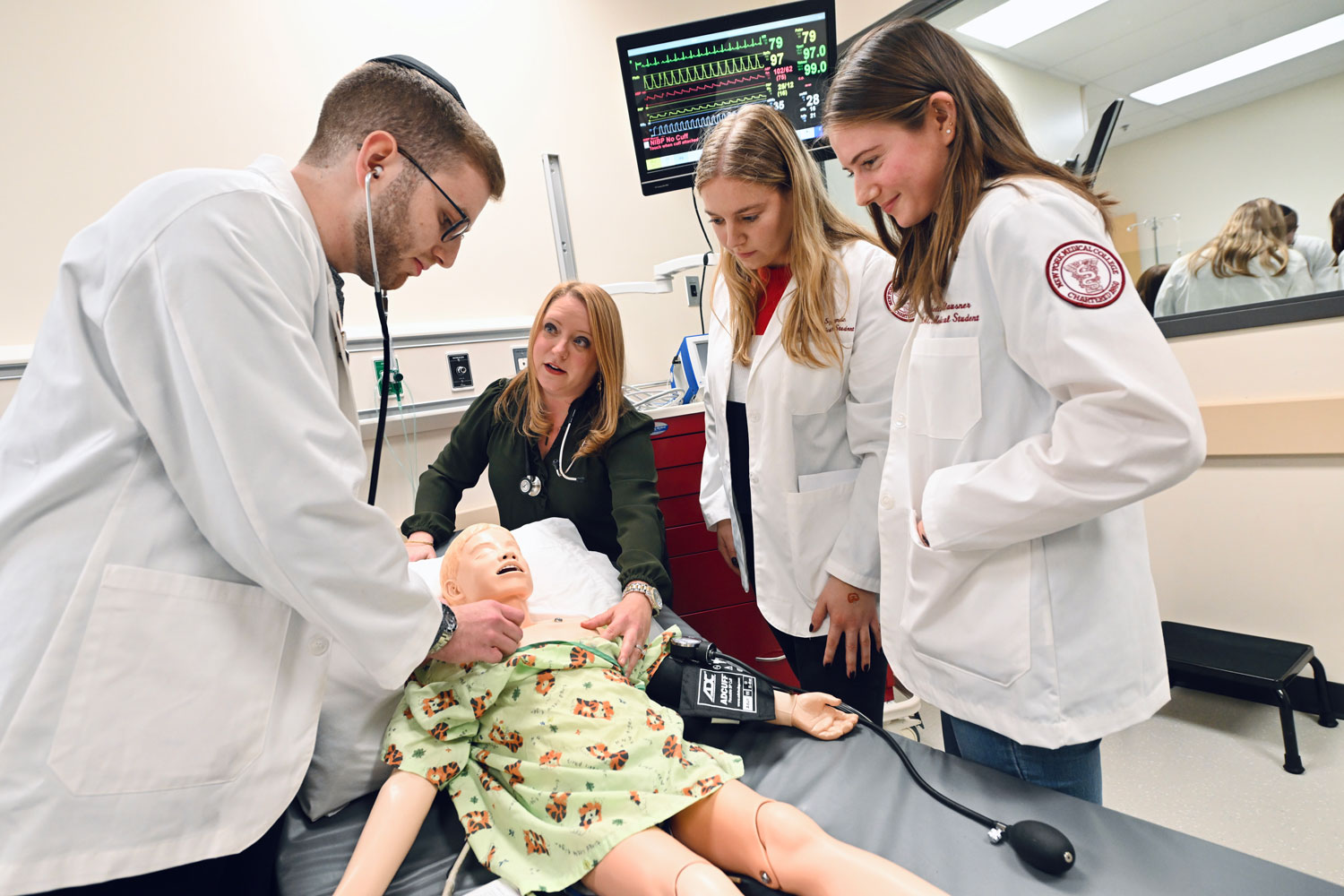
Procured through a Children’s Dream Foundation Grant, SimJunior helps prepare health professionals to address common health concerns that face the pediatric population.
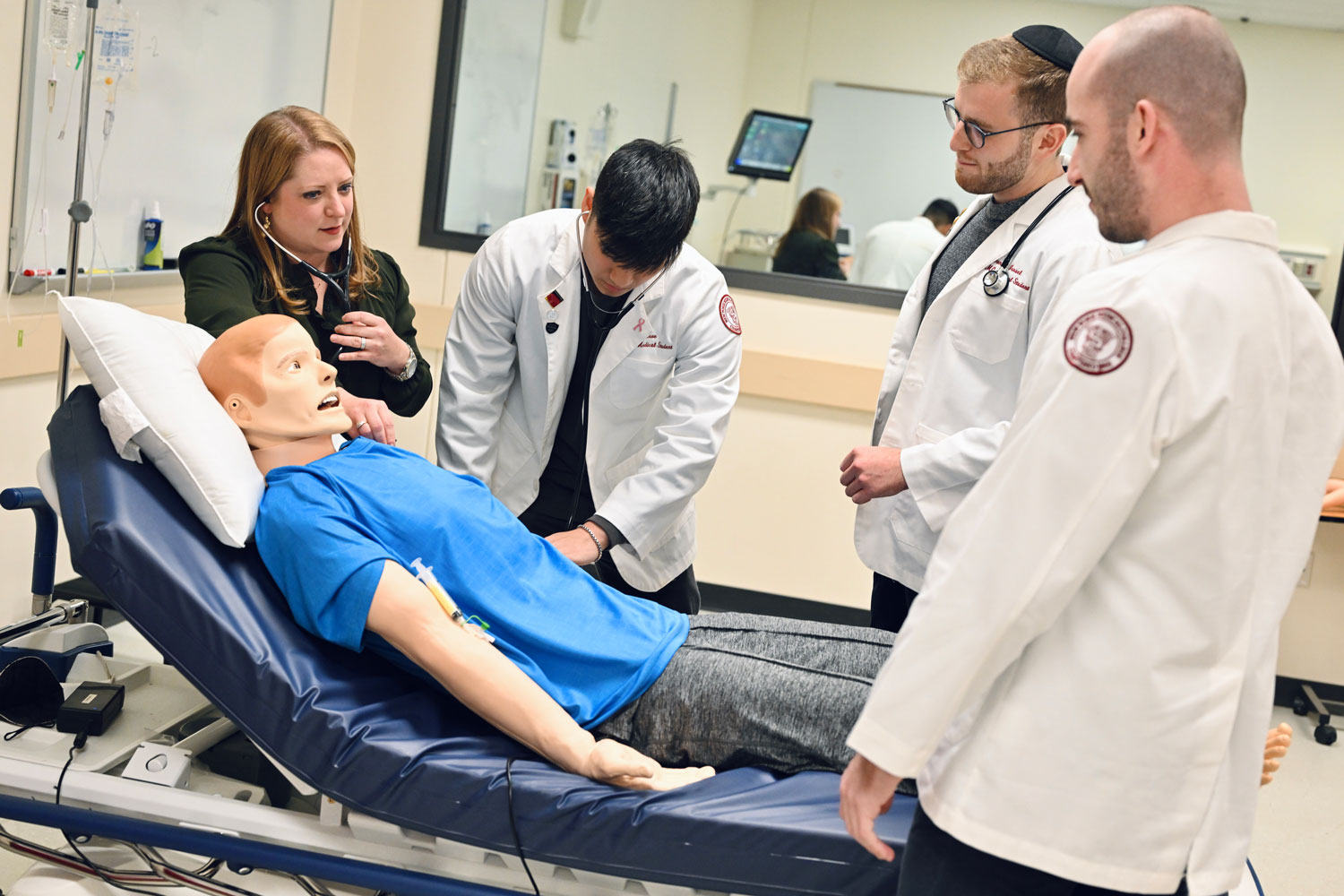
The new Sim Man 3G Plus is capable of representing a diverse range of patients with improved clinical features to help prepare learners for real-world situations.

Advanced Task trainers provide learners with the opportunity to practice on pediatric task trainers to learn the signs and appreciate treatment protocols that prevent pediatric emergencies.
Staff

Katharine Yamulla, M.H.E.A, CHSE

Elli Levy, M.A.

Julia Levo, M.F.A.

Jeanne Collins, M.A.

Sylvia De La Torre
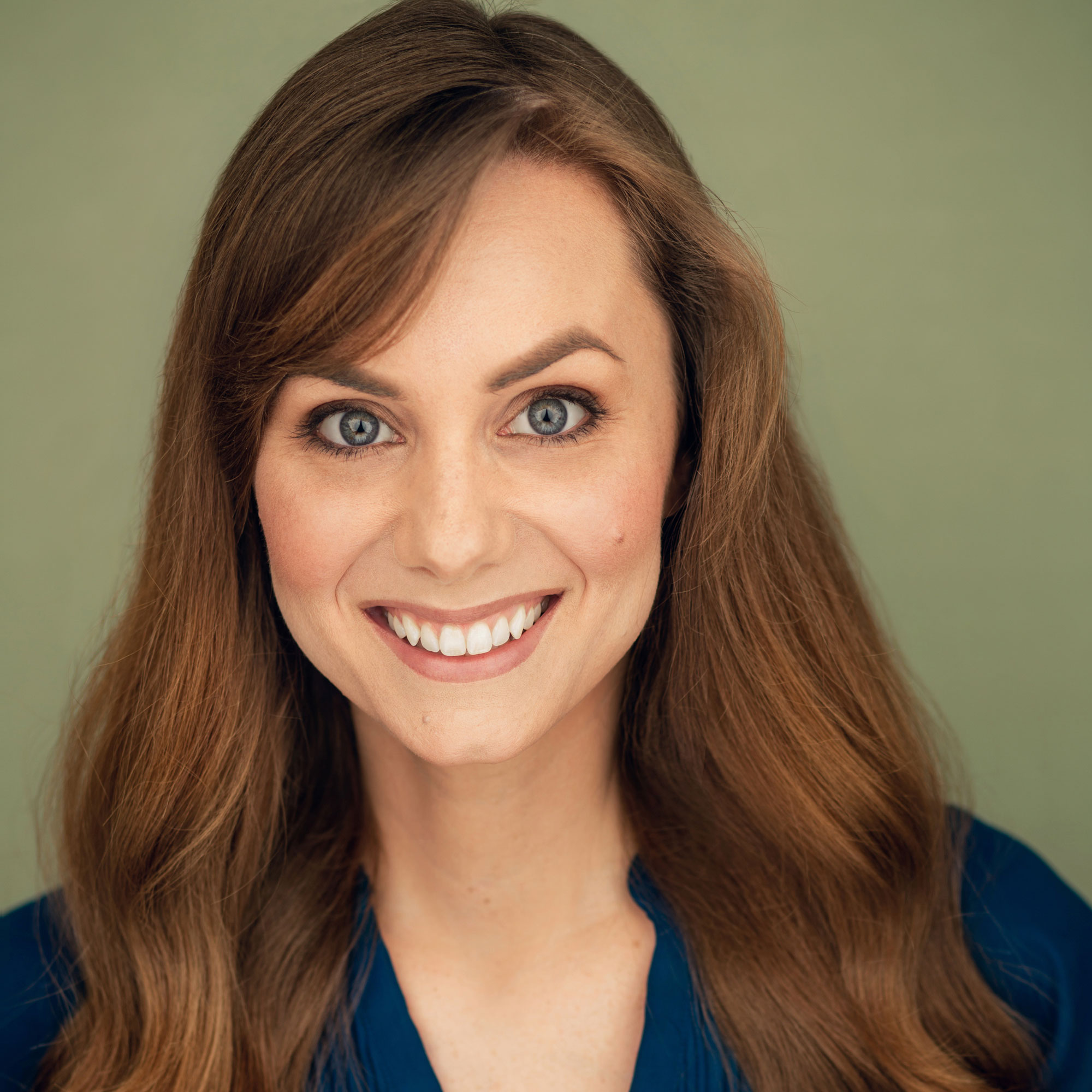
Michelle Foard

Maybeth Ryan


